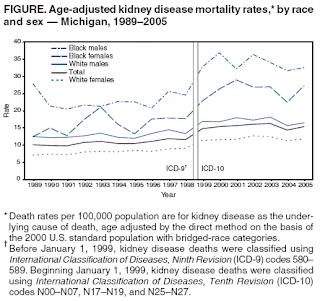Researchers trying to uncover why premature birth is a growing problem in the United States and one that disproportionately affects black women have found that pre-pregnancy depressive mood appears to be a risk factor in preterm birth among both blacks and whites.
Black women, however, have nearly two times the odds of having a preterm birth compared to white women, according to Amelia Gavin, a University of Washington assistant professor of social work and lead author of a new study that appears online in the June issue of the Journal of Women's Health.
"Preterm births are one of the most significant health disparities in the United States and the overall number of these births increased from 10.6 percent in 2000 to 12.8 percent in 2005," she said.
 melia Gavin, Assistant Professor, Social Welfare Doctoral Faculty. gavina@u.washington.edu. Office: 127C Phone: 206-616-8847. UW School of Social Work. 4101 15th Avenue NE. 354900, Seattle WA 98105-6299 | While there appears to be some sort of link between giving birth prematurely and depressed mood, the study found no cause and effect, said Gavin, who studies health disparities. She believes the higher preterm birth rate among blacks may be the result of declining health over time among black women. For this study, premature birth referred to any child born after less than 37 weeks of gestation. Normal gestation ranges from 38 to 42 weeks. Data for the study was drawn from a larger longitudinal investigation looking at the risks for cardiovascular disease among more than 5,000 young adults in four metropolitan areas. The Coronary Artery Risk Development in Young Adults Study also collected information about mental health and pregnancy outcomes. Between 1990 and 1996, 555 women in the larger study gave birth. These women were the subjects in the depression-premature birth study. |
In the study 18.1 percent of the black women had a preterm birth compared to 8.5 percent of the white women.
This difference may be the result of what she calls "weathering," or accelerated declines in health due to repeated socioeconomic and political factors.
"What some people experience by being black takes a toll on the physiological system, and over time wear and tear that occurs across neural, neuroendocrine and immune systems as a result of chronic exposure to stressors lead to health disparities for blacks. Some of this may manifest itself in premature birth and low-birth weight," Gavin said.
The study did not look at depressive mood or depression during pregnancy because the larger research project did not collect that data. She hopes to replicate and expand her findings by analyzing data from another study to look at depressive mood prior to pregnancy and childhood poverty to see if those two factors in part explain the black and white difference in preterm delivery. That study also will look at the role antidepressive medication plays in preterm birth.
"My ultimate goal is to incorporate a life course health development framework to examine disparities in birth outcomes," she said. "You have to look at the context of health across the life course of a woman, not just during pregnancy."
The consequences of higher preterm delivery are a growing burden on the health care system and parents. Studies have shown that preterm babies have higher morbidity rates and U.S. preterm birth rates are creeping up with no good explanation. In the U.S. the population at greatest risk for major depression is women of childbearing age and the onset and course of depression are often intertwined with reproductive events. A recent national study reported that 8.4 percent of pregnant women in the past year experienced major depression and only slightly more than 14 percent of those women sought treatment for any mood disorder. ###
Co-authors of the study are David Chae of Emory University, Sarah Mustillo of Purdue University, and Dr. Catarina Kiefe of the University of Alabama at Birmingham and the Birmingham Veterans Affairs Medical Center. The National Center for Research Resources and the Roadmap for Medical Research, both components of the National Institutes of Health, funded the research.
For more information, contact Gavin 206-616-8847 or gavina@u.washington.edu.
Contact: Joel Schwarz joels@u.washington.edu 206-543-2580 University of Washington
































